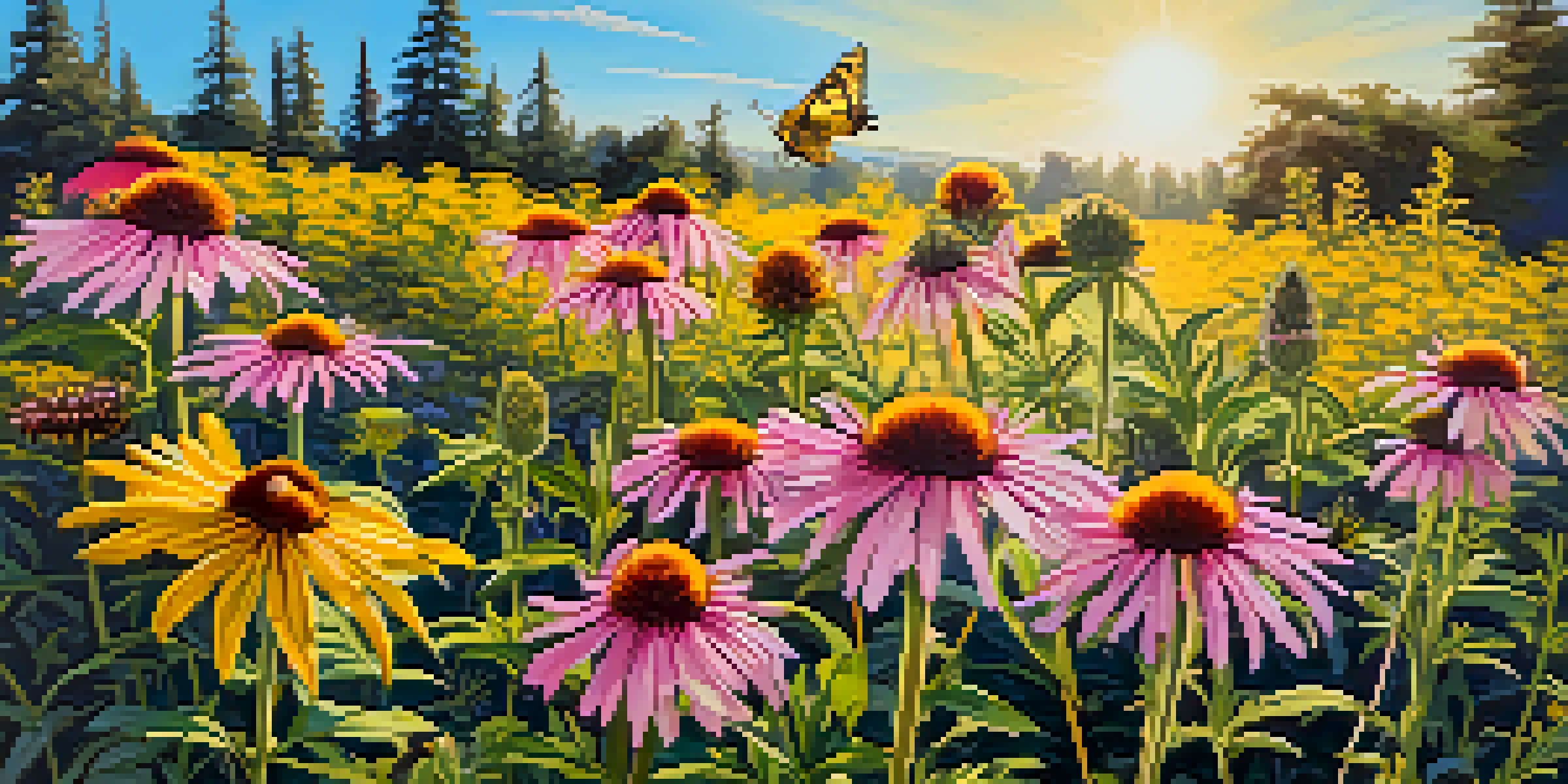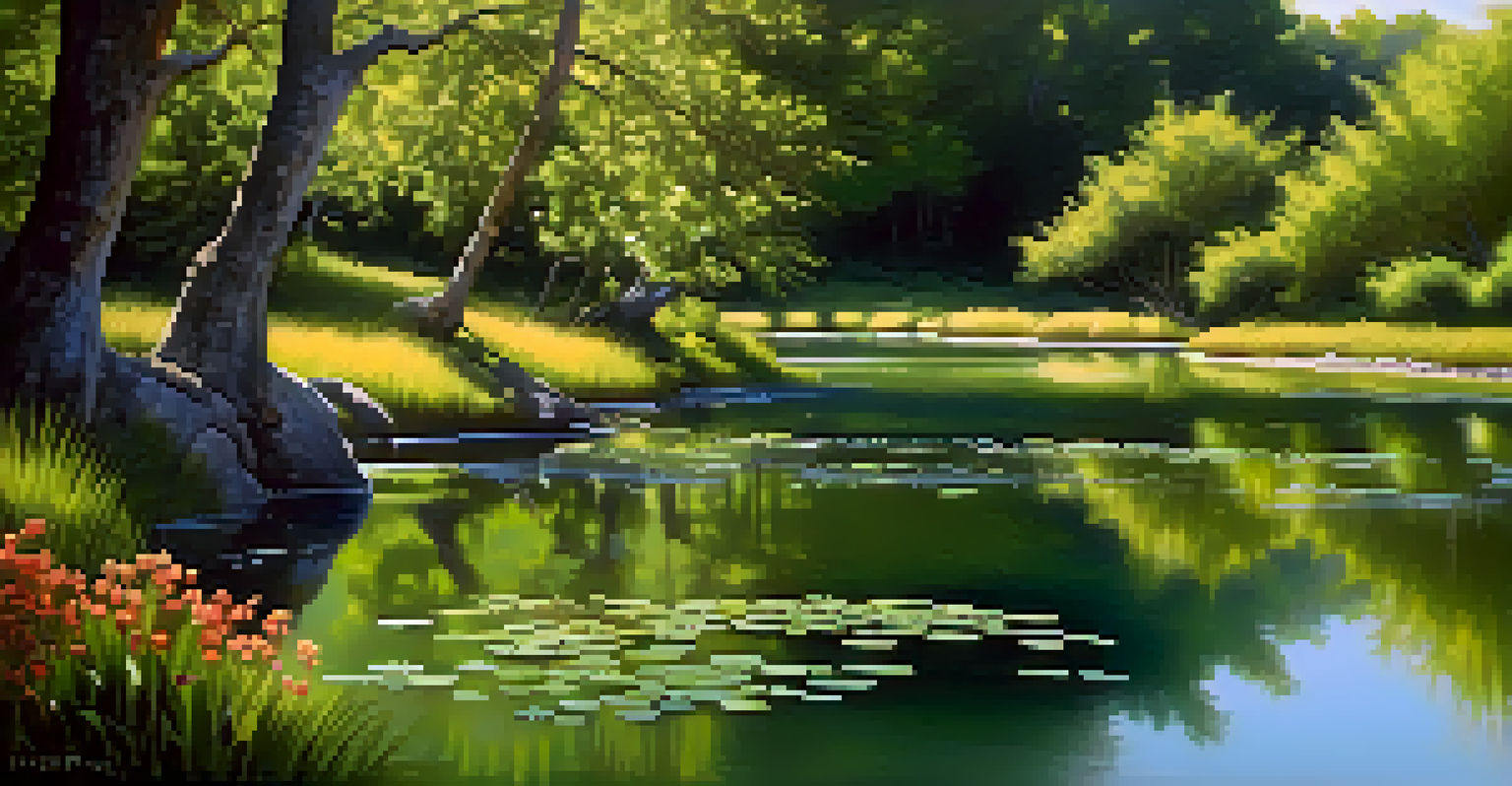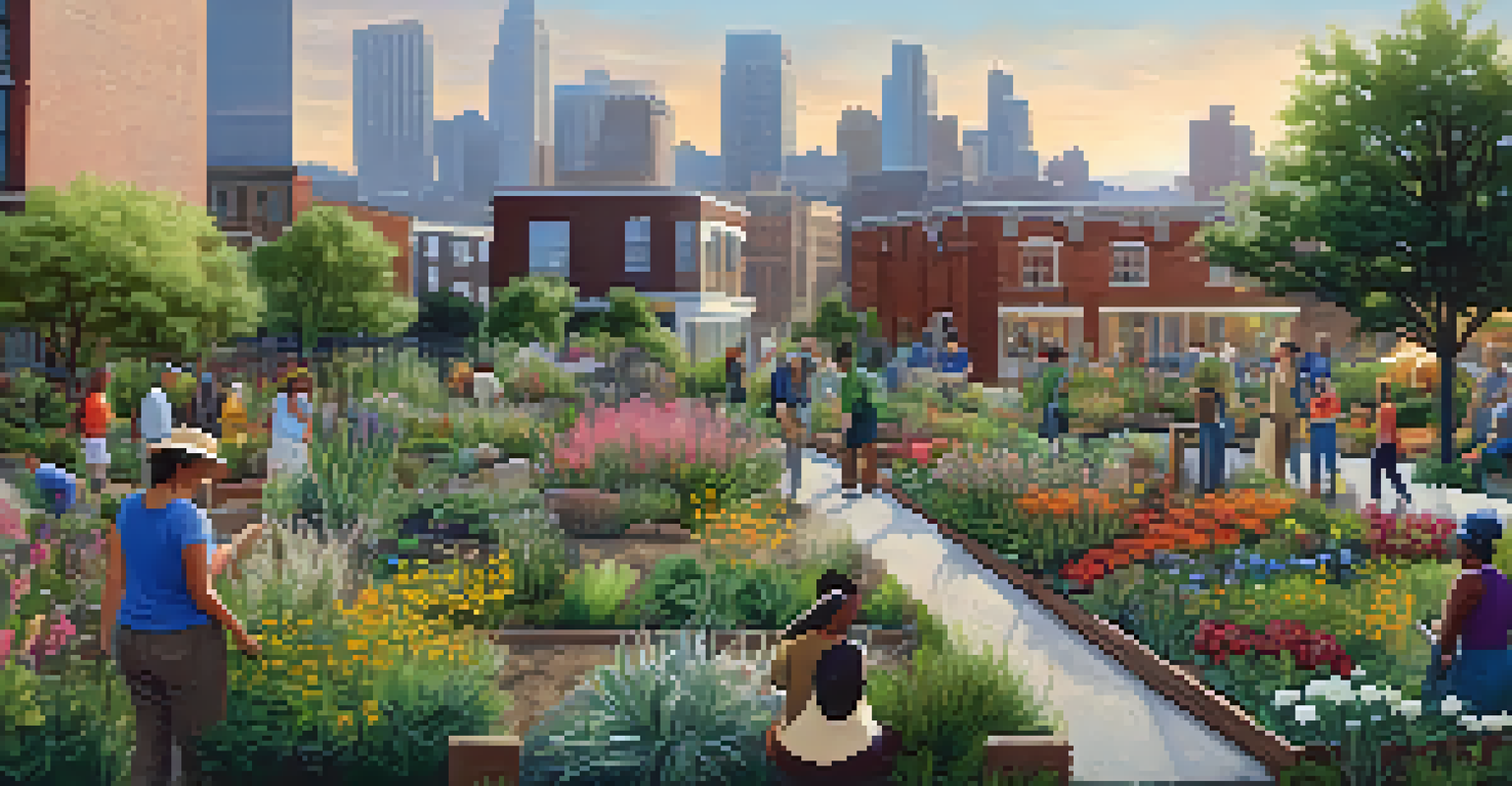The Importance of Native Plants in Sustainable Landscaping

Understanding Native Plants and Their Ecosystem Role
Native plants are species that have evolved in a specific region and are adapted to the local climate and soil conditions. They play a crucial role in maintaining the balance of the ecosystem by supporting local wildlife and promoting biodiversity. For example, a native flower can provide essential nectar for local pollinators like bees and butterflies, which are vital for healthy plant reproduction.
Native plants are the backbone of healthy ecosystems and play a vital role in supporting wildlife and biodiversity.
Unlike non-native plants, which can sometimes become invasive, native plants coexist harmoniously with their environment. They offer shelter and food for various species, including birds, insects, and even small mammals. When you plant native species, you’re essentially rebuilding the natural habitat that may have been lost due to urban development or agricultural practices.
Incorporating native plants into your landscape not only enhances its beauty but also ensures that it contributes positively to the ecosystem. It’s a way to support local wildlife while creating a thriving, vibrant outdoor space that reflects the natural heritage of your region.
The Environmental Benefits of Native Plants
One of the standout benefits of using native plants in landscaping is their low water requirement. Because they are adapted to local rainfall and soil conditions, they thrive with minimal irrigation. This not only saves water but also reduces the energy costs associated with irrigation systems, making your landscaping more sustainable.

Additionally, native plants require fewer chemical fertilizers and pesticides. Their natural resistance to local pests means that you can cultivate a healthy garden without the need for harmful chemicals that can leach into the soil and waterways. This promotes a healthier environment for both your family and local wildlife.
Native Plants Support Ecosystems
Native plants enhance local biodiversity and provide essential habitats for wildlife.
By choosing native plants, you actively contribute to soil health and erosion control. Their deep-root systems help stabilize the soil, reducing runoff and improving water quality. This means that by creating a beautiful landscape, you’re also protecting the environment in practical and impactful ways.
Enhancing Biodiversity with Native Landscaping
Biodiversity is essential for a healthy ecosystem, and native plants are key players in enhancing it. By planting a variety of native species, you create habitats that support a multitude of organisms. This diversity makes your landscape more resilient to pests, diseases, and changing climate conditions.
The greatest service which can be rendered to any country is to add a useful plant to its agriculture.
For instance, a garden filled with diverse native plants can attract a range of pollinators, each playing a vital role in the pollination process. This, in turn, helps ensure the survival of many plant species, creating a healthy cycle of life. Think of your garden as a small ecosystem where each plant and creature contributes to the greater whole.
Moreover, fostering biodiversity through native landscaping can lead to a deeper connection with nature. Observing the interactions among the various species in your garden can be incredibly rewarding, offering opportunities for education and appreciation of the natural world right in your backyard.
Cost-Effectiveness of Native Plant Gardening
When considering landscaping options, the cost-effectiveness of native plants often comes as a pleasant surprise. While some may assume that native plants are harder to find or more expensive, they typically require less maintenance and fewer resources over time. This translates to lower costs in terms of water, fertilizers, and overall upkeep.
By reducing the need for chemical inputs and extensive irrigation, native landscaping not only saves you money but also time. Imagine spending less time mowing, watering, and weeding, allowing you to enjoy your outdoor space more fully. It’s a win-win situation for both your wallet and your schedule.
Cost-Effective and Low Maintenance
Using native plants reduces water and maintenance costs, making landscaping more sustainable.
Furthermore, many local governments and conservation organizations offer incentives for using native plants. These can include rebates, grants, or even tax breaks, making it even more affordable to create a sustainable landscape that benefits both you and the environment.
Creating Aesthetic Appeal with Native Plants
Beyond their ecological benefits, native plants can also enhance the visual appeal of your landscape. With a diverse array of colors, shapes, and sizes, native species can create stunning displays throughout the seasons. For instance, the vibrant blooms of a native coneflower can brighten up a summer garden, while the autumn hues of goldenrod can add warmth to your landscape.
Incorporating native plants allows for a more natural look that can blend seamlessly with the surrounding environment. This can be particularly appealing in urban areas where artificial landscaping may dominate. By choosing native plants, you can create a harmonious outdoor space that reflects the local ecosystem's beauty.
Moreover, many native plants have unique textures and forms that can add depth and interest to your garden design. This variety not only captivates the eye but also encourages wildlife to visit, creating a dynamic and lively atmosphere that changes with the seasons.
Promoting Local Culture and Heritage with Native Plants
Using native plants in landscaping is not just about aesthetics or environmental benefits; it’s also a nod to local culture and heritage. Many native plants have historical significance, often being used by Indigenous peoples for food, medicine, and craft. By incorporating these plants into your landscape, you honor that legacy and keep traditional knowledge alive.
Additionally, landscaping with native species can foster a sense of community pride. When neighborhoods embrace native plants, it creates a shared identity and highlights the unique characteristics of the local environment. This can lead to community initiatives focused on conservation and sustainable practices.
Celebrate Local Culture with Plants
Incorporating native species honors local heritage and fosters community pride and identity.
By choosing native plants, you contribute to a larger movement that values and preserves local ecosystems. It’s a way to connect with your roots and engage with the history of the land while promoting a sustainable future for generations to come.
Getting Started with Native Plants in Your Landscape
If you’re ready to dive into the world of native landscaping, the first step is to research which plants are native to your region. Local extension services, botanical gardens, and conservation organizations can be excellent resources for finding native species that thrive in your area. They often provide lists or guides that help you choose the right plants for your specific conditions.
Once you’ve selected your native plants, consider the design of your landscape. Grouping plants with similar sunlight and water needs can create a harmonious look while ensuring all plants thrive. Don’t be afraid to experiment with different combinations to find what works best for your space.

Lastly, remember that creating a native landscape is a journey, not a sprint. Start small, perhaps with a few native flowers or shrubs, and gradually expand as you learn more about their care and benefits. Each step you take contributes to a healthier environment and a more beautiful outdoor space.